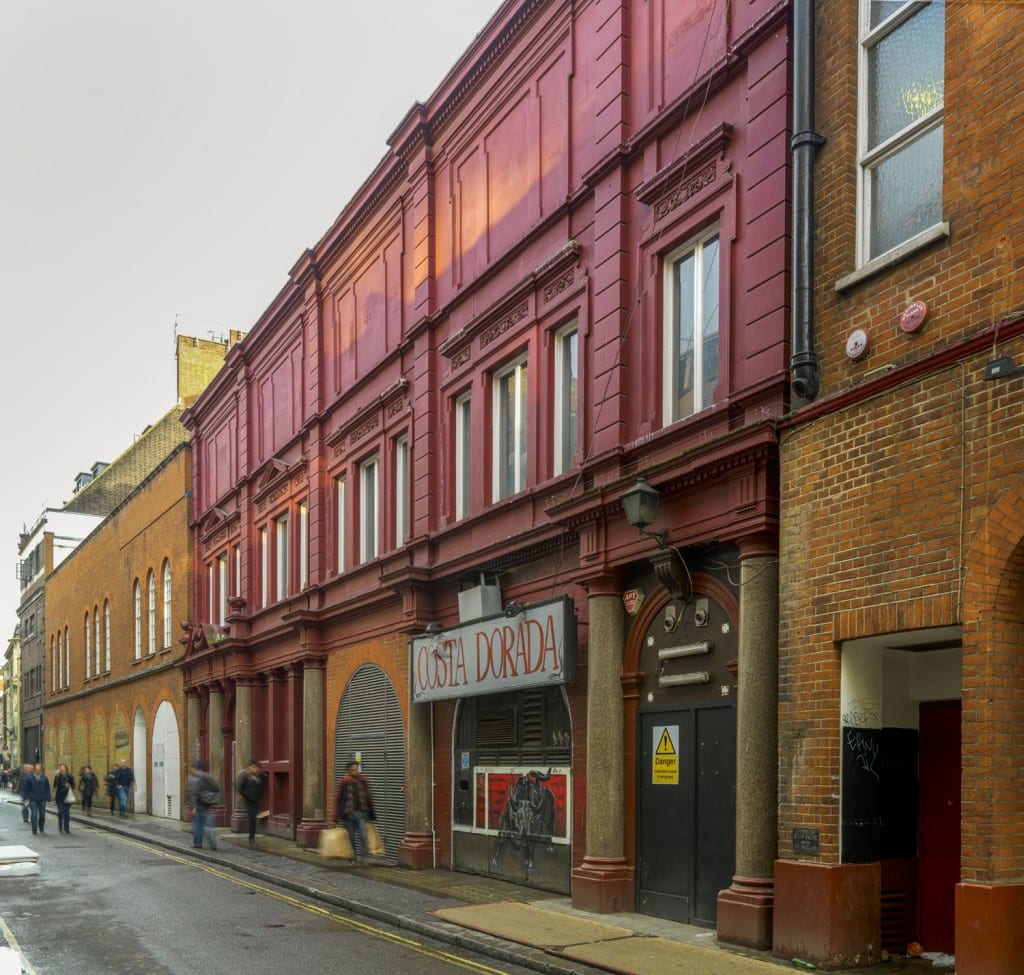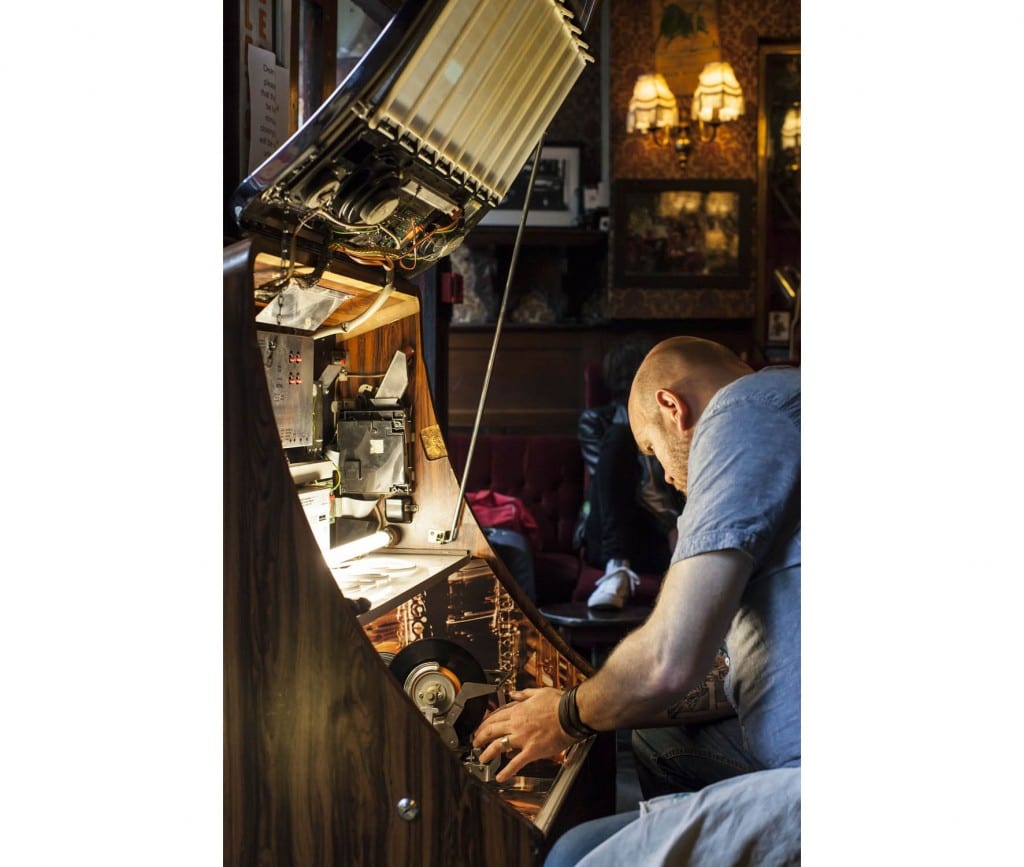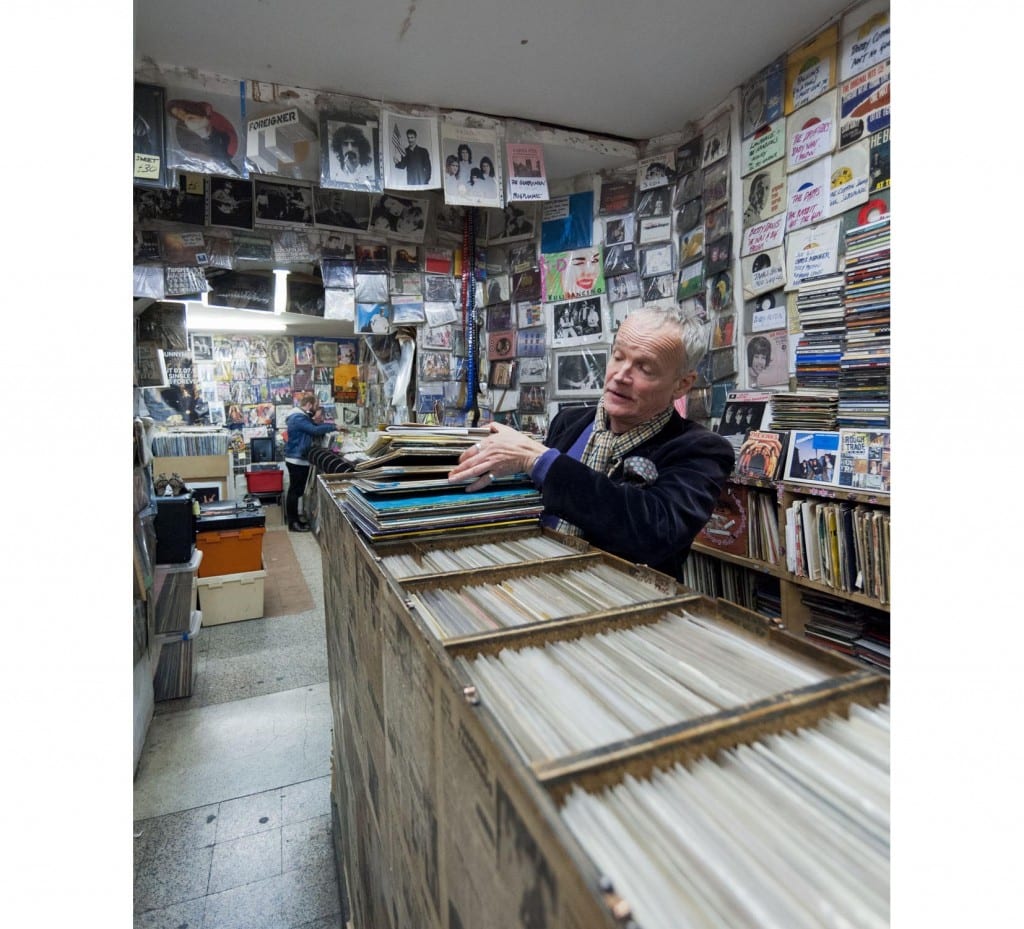Hanway Street 2
By the Survey of London, on 4 December 2015
Since Hanway Street was formed in the early eighteenth century, its occupancy has shifted from a mix of shopkeepers, tradesmen and the poor, to coffee bars, clubs and restaurants known for their offbeat vibe. As part of our current study of south-east Marylebone, the Survey of London has created a table to record the uses of buildings on the north side of Hanway Street in 1792, 1910 and 2012 (the table is accessible here as a pdf). The latter-day character of Hanway Street has had much to do with adjacent Soho – but please, this is not Noho, oh no.

Bradley’s Spanish Bar at 42-44 Hanway Street in 2014, from the north-east (© Historic England, Chris Redgrave). If you are having difficulty viewing images, please click here.
Small Italian-run refreshment rooms had arrived by the 1920s, including in the prominent corner premises at No. 32 by 1933. At No. 22 the Acapulco coffee bar opened in 1953, run by John and Tommy Milo, Greek-Cypriot twins and amateur wrestlers. Its name, ownership and the addition of the Sombrero club notwithstanding, it was Spanish-themed – John Milo’s wife was said to be Spanish. At No. 32 the Dickens Chop House was succeeded around 1955 by the Chiquito club and espresso coffee bar. Its first proprietor, K. D. Emihea, was imprisoned for contempt of court and in 1957 it was licensed for just two guitar players and no dancing, the basement being a ‘skiffle singing room’. It featured prominently as a happening place in the film Expresso Bongo (1959), which launched the career of Cliff Richard. No. 38 was Le Moulin Rouge from about 1953; later that decade it became the Andalucia Casa del Café featuring a distinctive semicircular window to the street. A resident of 2 Hanway Place opposed the renewal of licenses to these three establishments in that year on the grounds of ‘nuisances of various sorts ranging from simple urination to sexual intercourse in the doorways’. [1] The Chiquito introduced striptease in 1960.

A view of Costa Dorada, Hanway Street from the north-west in 2014 (© Historic England, Chris Redgrave)
No. 42 had long been a wine merchant’s, from the 1890s Long & Co., who gave customers biscuits and sandwiches with their wine in an establishment that was ‘a cut above the public house’, [2] continuing to import and serve Spanish wine and sherry into the 1950s. An Irish manager, William Bradley, President of the Hanway Club from 1930 to 1962, persuaded the Milo twins to buy the premises in the 1960s and so began Bradley’s Spanish Bar. A ‘Little Spain’ character was further reinforced on Hanway Street’s south side as the Meson Del Ruso, Costa Dorada and flamenco shows followed. Yet in the 1970s No. 22 became the Heidelberg Bierkeller Restaurant, No. 38 the D.U.B. Club and on Hanway Place was the Mandeer Vegetarian Restaurant.

The interior of Bradley’s Spanish Bar in 2014 (© Historic England, Chris Redgrave)

Bradley’s Spanish Bar in 2014; fixing the jukebox (© Historic England, Chris Redgrave)
The influential architect Cedric Price was among those who enjoyed the seedy glamour of Hanway Street, which he likened in 1973 to ‘a film set of old London’. [3] By the 1980s second-hand vinyl outlets had joined the Spanish bars and late-night clubs. Vinyl Experience painted the façade of No. 20 with characters from Yellow Submarine, removed in 2013. Casablanca Records, established in 1979 at No. 20, continued next door at No. 22 under its owner Tim Derbyshire as ‘On The Beat’ up to its closure in 2014. In 2013, when Blow Up, Paul Tunkin’s DJ firm, departed from No. 40, another vinyl shop at No. 36 closed, only to be replaced by the Vinyl Bar in 2015.

‘On The Beat’ Record Shop at No. 22 Hanway Street in 2014 (© Historic England, Chris Redgrave)

Tim Derbyshire in ‘On The Beat’ in 2014 (© Historic England, Chris Redgrave)

‘On The Beat’ at 22 Hanway Street in 2014 (© Historic England, Chris Redgrave)
There have been refurbishments at Hanway Street, with tidying of street furniture and of residential accommodation, as at 1 Hanway Place, refitted in 1986 by Building Design Partnership, which was based at the back. Hanway Street was designated a Conservation Area in 1990. The former Westminster Jews’ Free School was converted into flats in the late 1990s, as was 18 Hanway Street for the Soho Housing Association in 2013. Bars, clubs, DJ supply shops and casting agencies have continued among a miscellany of commercial uses at the same time that Frogmore and Land Securities is homogenizing the south side in redevelopment that began in 2014. Transport for London recently announced plans for a new station entrance and Crossrail 2 construction site at the corner of Oxford Street and Rathbone Place. Derwent London has bought up 36–38 and 42–44 Hanway Street, along with 50 Oxford Street adjoining.

Rapid change on Hanway Street, showing Nos 22, 20 and 18 in 2014 (left) and 2013 (right) (© Historic England, Chris Redgrave)

The former Westminster Jews’ Free School on Hanway Place in 2014 (© Historic England, Chris Redgrave)
Sources
- London Metropolitan Archives, GLC/AR/BR/7/4838
- London School of Economics, Booth notebooks, B355, pp.71–3
- Evening Standard, 5 June 1973
Links
Glimpses of Hanway Street in the film Expresso Bongo (1959), via the Reel Streets website.
 Close
Close


